Identifying Key Signs of Drywall Damage: When to Seek Professional Repair Services
Drywall damage is a common issue many homeowners face, but recognizing the signs can be challenging. This article will discuss key indicators of drywall damage, when to seek professional help, and the potential costs of delaying repairs. Homeowners will learn how to identify problems early, ensuring their homes remain safe and aesthetically pleasing. By understanding these signs, readers can avoid costly repairs and find the right professionals to restore their drywall effectively. Addressing drywall issues promptly not only enhances home value but also improves living conditions.
Identifying Key Indicators of Drywall Damage
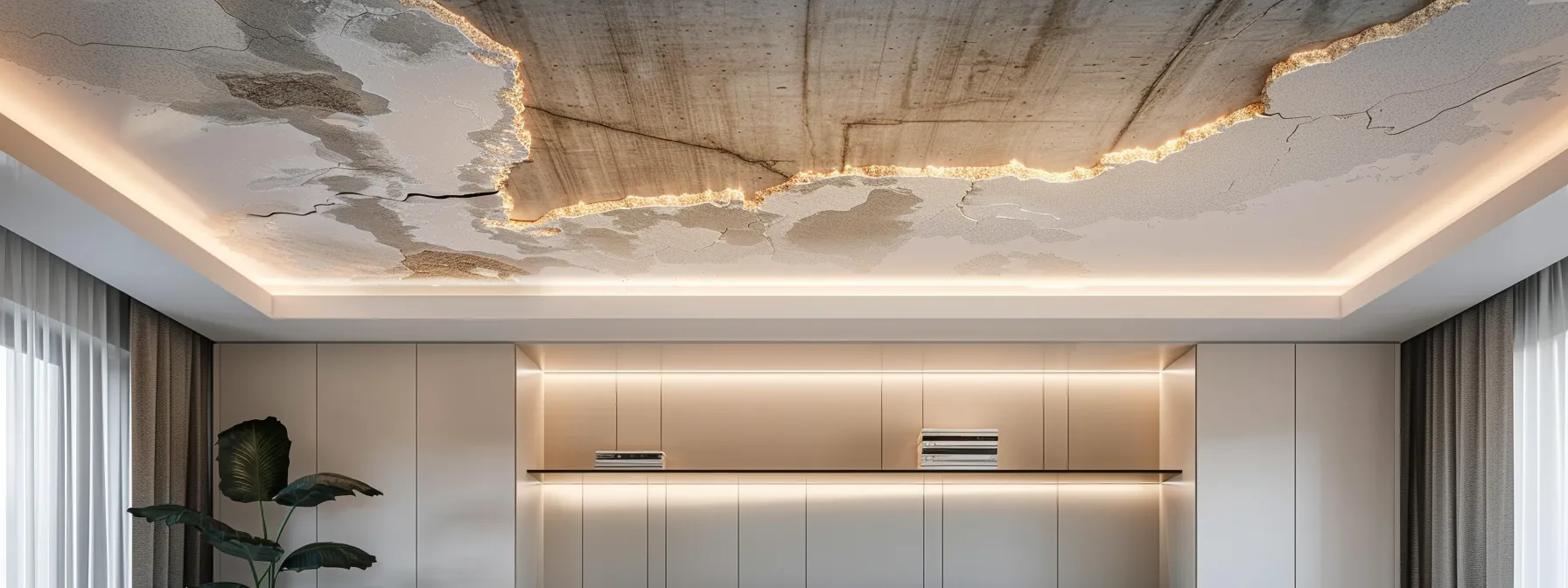
Homeowners should be vigilant in identifying key indicators of drywall damage. They need to look for cracks or crevices on the surface and check for water stains or moisture marks, which often signal a leak. Inspecting for indentations, dents from impact, signs of mold or mildew growth, and monitoring for uneven surfaces or bulging are essential steps in assessing the condition of drywall. Recognizing these signs will help determine when professional remediation services are necessary to maintain a seamless ceiling and overall home integrity.
Look for Cracks or Crevices in the Surface
Cracks or crevices in drywall can serve as early indicators of wall damage, often resulting from natural wear or structural shifts. Homeowners should pay attention to these signs, as they may suggest deeper issues that require professional drywall repair. Engaging an expert can ensure that any underlying problems are properly addressed, preventing further deterioration and maintaining the integrity of the home.
Assess for Water Stains or Moisture Marks
Water stains or moisture marks on drywall are significant indicators of underlying issues that homeowners should not ignore. These stains often suggest the presence of leaks, which can lead to mold growth if not addressed promptly. Homeowners facing such issues may need to consult a professional drywall service to evaluate the damage and determine if sections need to be replaced to restore their home’s structural integrity.
Inspect Indentations or Dents From Impact
Indentations or dents on drywall often stem from daily wear and tear or impacts from furniture or appliances. These blemishes can compromise the aesthetic appeal of a home and signify a need for professional intervention to maintain structural integrity. Homeowners noticing such damage should communicate with experienced drywall specialists to assess whether repairs are necessary or if sections might need replacement, especially if the damage coincides with incidents like floods, where water damage restoration becomes a priority.
Recognize Signs of Mold or Mildew Growth
Mold or mildew growth on drywall can indicate serious water damage and compromised wall integrity. Homeowners should be alert to any musty odors or visible growth, as these issues can affect the foundation of the home if left unaddressed. Seeking professional drywall installation or repair services promptly can help ensure customer satisfaction and protect the home from further deterioration caused by moisture-related problems.
Monitor for Uneven Surfaces or Bulging
Uneven surfaces or bulging in drywall can signal underlying moisture issues and potential structural damage, often stemming from wet drywall caused by leaks or poor ventilation. Homeowners should observe any visible imperfections, as these can complicate future repairs and lead to the growth of mold, necessitating professional mold removal. Engaging a reputable painting company or drywall repair service is advisable to assess and resolve the issue effectively, ensuring the integrity of the wall and the overall safety of the home.
Understanding When to Seek Professional Help
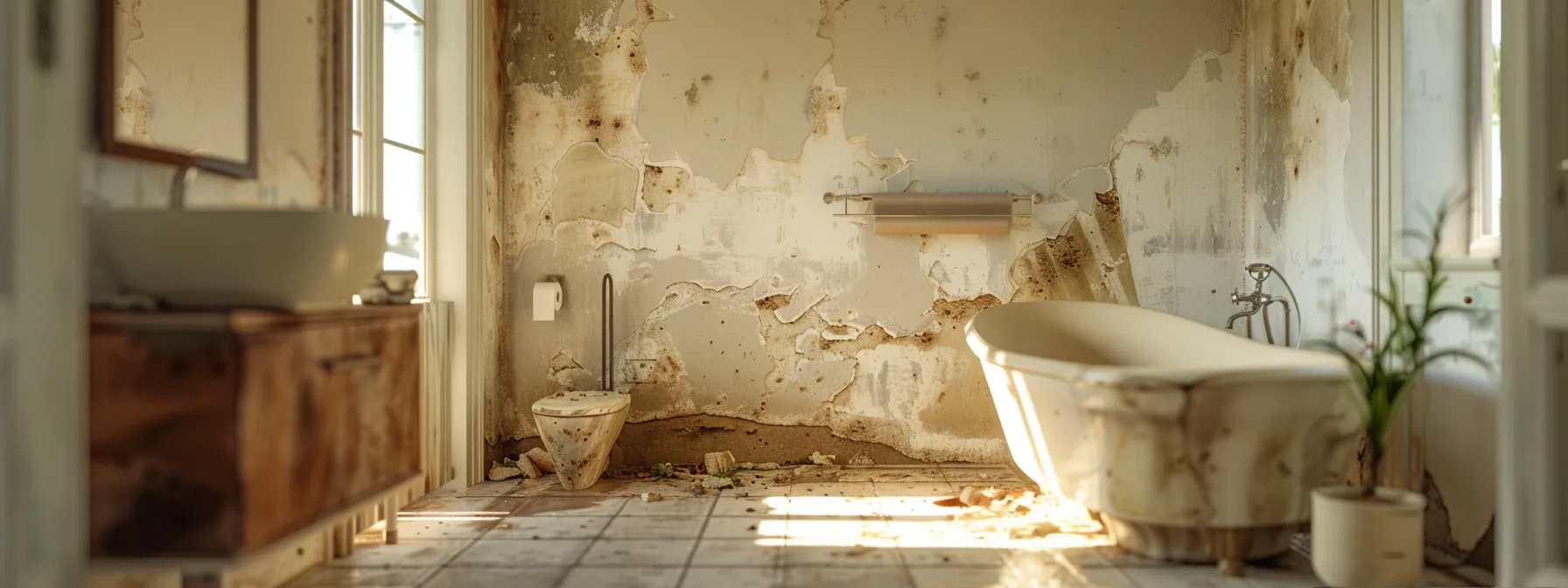
Evaluating the size and severity of drywall damage is crucial for homeowners. Signs such as moisture accumulation, particularly in areas like the bathroom, may indicate underlying issues, including potential mildew growth. It’s important to consider whether the structural integrity of the walls is compromised, recognize safety hazards associated with damaged drywall, and seek professional opinions for extensive restoration or installation needs. These assessments will ensure a safe and durable living environment.
Evaluate the Size and Severity of Damage
Homeowners should carefully evaluate the size and severity of drywall damage to determine whether professional repair services are warranted. Visible signs such as large cracks, significant moisture stains, or an extensive bulging of the walls can indicate serious underlying issues that require immediate attention. Addressing these problems promptly not only restores the appearance of the walls but also prevents further deterioration, ensuring the safety and integrity of the home.
Determine if Structural Integrity Is Compromised
Determining if structural integrity is compromised is essential for homeowners when assessing drywall damage. Signs such as extensive cracks, bowing, or noticeable sagging can indicate significant issues that may affect the overall stability of the home. Engaging a professional to examine these conditions ensures that any underlying problems are properly identified and addressed, safeguarding both the home and its occupants.
Consider the Source of Damage
Understanding the source of drywall damage is key for homeowners when deciding to seek professional repair services. Damage caused by leaking pipes or poor drainage often requires specialized attention to prevent future issues, while impact damage from moving furniture may need less extensive repairs. Identifying whether the problem originates from structural deficiencies or external factors can guide homeowners in choosing the right experts to address the specific needs of their property effectively.
Recognize Safety Hazards Associated With Damaged Drywall
Homeowners must be aware that damaged drywall can pose safety hazards, particularly when it compromises structural integrity. For example, extensive cracks or sagging not only affect aesthetics but can lead to collapse if not addressed. Seeking professional repair services promptly mitigates risks associated with potential injuries and ensures a safe living environment.
Get Professional Opinions for Extensive Damage
When homeowners encounter extensive drywall damage, seeking professional opinions is essential. Experts can accurately assess the situation, determining the extent of repairs needed and whether replacement is necessary. Engaging skilled professionals ensures that the repairs are conducted safely and effectively, ultimately preserving the home’s structural integrity and providing peace of mind.
The Cost Implications of Delaying Repairs

Delaying drywall repairs can lead to significant financial implications. Homeowners must analyze repair costs for minor versus major damage, as well as understand the potential hidden damages that may arise. Long-term maintenance costs should also be considered, along with a comparison of DIY solutions to professional services. The financial impact of postponed repairs can strain budgets and compromise home integrity.
Analyzing Repair Costs for Minor vs. Major Damage
When evaluating the cost implications of drywall repairs, homeowners must differentiate between minor and major damage. Minor repairs, such as fixing small cracks or dents, typically incur lower costs and can often be managed without extensive expertise. In contrast, major damage, such as extensive water stains or structural compromises, requires professional intervention to ensure safety and effective resolution, leading to higher expenses. Understanding these differences is crucial for homeowners to budget effectively and prevent the financial strain that can result from delaying necessary repairs.
Understanding Potential Hidden Damages
Homeowners often overlook potential hidden damages, which can escalate repair costs significantly. For instance, unseen leaks can cause mold growth behind walls, leading to health risks and more complex remediation needs. Understanding the importance of addressing drywall issues promptly helps prevent these hidden damages and ultimately protects both the home’s integrity and the homeowner’s finances.
Factoring in Long-Term Maintenance Costs
Homeowners should factor in long-term maintenance costs when evaluating drywall repairs. Delaying necessary repairs can result in escalating issues such as mold growth and structural damage, ultimately leading to more extensive and costly interventions. By addressing drywall concerns promptly, homeowners can maintain both the aesthetic appeal of their property and their financial well-being.
Comparing DIY Solutions to Professional Services
When considering drywall repairs, homeowners often weigh DIY solutions against professional services. While DIY repairs might seem cost-effective, they can lead to additional expenses if not executed correctly, particularly in cases of significant damage. Engaging professionals ensures that repairs are performed to high standards, preventing future issues related to structural integrity and costly remediation, which can outweigh initial savings from DIY attempts.
Financial Impact of Postponed Repairs
Postponing drywall repairs can lead to significant financial consequences for homeowners. For example, minor damage may appear manageable initially, but delays can result in mold growth and more extensive structural issues, requiring costly interventions. Homeowners should recognize that addressing drywall problems promptly not only preserves the integrity of their home but also protects their financial investment by preventing larger repair costs down the line.
Steps to Take Before Contacting Professionals
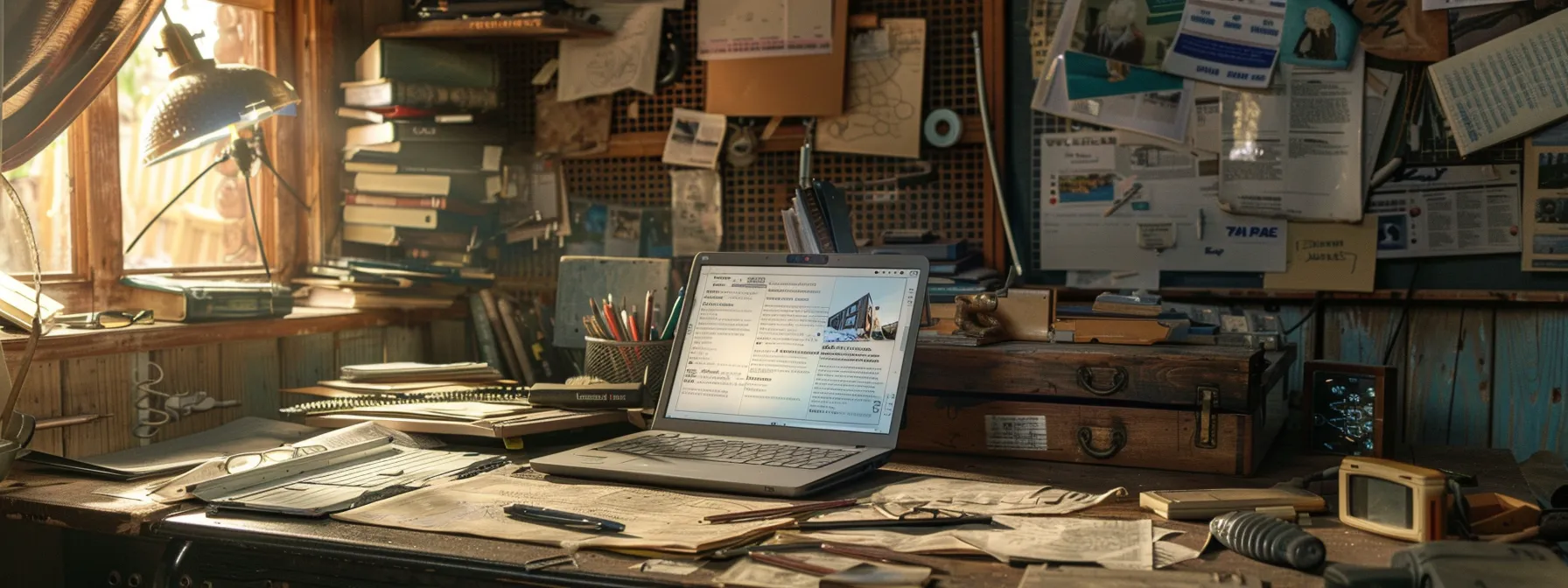
Before engaging professional drywall repair services, homeowners should take specific steps to streamline the process. Documenting damage with photos facilitates clear communication with contractors. Gathering information about the damage’s source helps in assessing the situation effectively. Preparing a list of relevant questions ensures all concerns are addressed. Understanding the repair process provides insight into what to expect, while assessing available repair service options allows for informed decision-making.
Documenting Damage With Photos
Documenting drywall damage with photos serves as a vital step before contacting professionals for repair services. Clear images of cracks, water stains, or any other visible issues enable contractors to assess the situation more accurately during initial consultations. This visual documentation not only helps convey the extent of the damage but also aids in obtaining precise repair estimates, ensuring homeowners receive effective services tailored to their specific needs.
Gathering Information About the Damage Source
Gathering information about the damage source is crucial for homeowners to accurately convey the issues to drywall repair professionals. This includes identifying any recent leaks, water intrusion, or impacts that may have led to the current condition of the drywall. For example, if water stains are present, homeowners should try to trace back to where the leak originated, such as from a roof, plumbing, or poor drainage, as this insight will assist professionals in addressing not only the visible damage but also preventing future problems.
Preparing a List of Questions for Contractors
Preparing a list of questions for contractors is an essential step for homeowners seeking drywall repair services. Inquiring about the contractor’s experience with similar damage, the materials they plan to use, and the estimated timeline for completion can provide valuable insights into their approach. This preparation not only helps ensure that homeowners feel confident in their choice of contractor but also facilitates clear communication about the specific needs related to drywall repairs.
Understanding the Repair Process Before Engagement
Understanding the drywall repair process before engaging professionals is essential for homeowners looking to address damage effectively. Being familiar with the steps involved, such as initial assessment, material selection, and scheduling, allows homeowners to have realistic expectations regarding timelines and costs. This knowledge not only facilitates smoother communication with contractors but also ensures that homeowners feel confident in the repair services they are about to undertake, ultimately leading to a more satisfying experience.
Assessing Available Repair Service Options
When assessing available drywall repair service options, homeowners should consider the reputation and experience of each contractor. Reading customer reviews and testimonials can provide insights into the quality of their work and customer service. Additionally, it’s beneficial to request estimates from multiple professionals, allowing homeowners to compare pricing and services offered, ensuring that they select a contractor who meets their specific needs while ensuring high-quality repairs.
Choosing the Right Professionals for Repairs
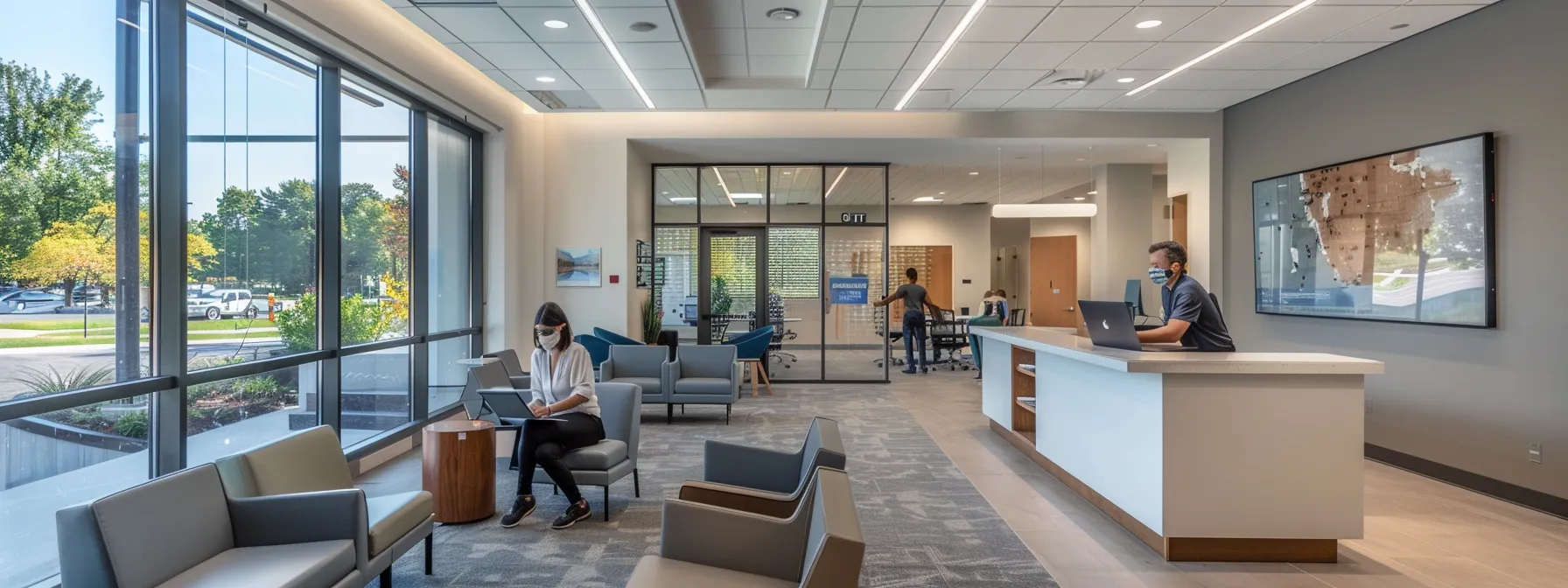
Choosing the right professionals for drywall repairs involves evaluating contractor credentials and experience, checking reviews and references from past clients, and comparing quotes alongside service offerings. Understanding warranty and aftercare services ensures peace of mind, while confirming compliance with local regulations protects homeowners from legal complications. Each of these steps is essential to ensure quality workmanship and satisfaction.
Evaluating Contractor Credentials and Experience
When selecting a contractor for drywall repairs, homeowners should thoroughly evaluate credentials and experience to ensure quality workmanship. Checking for licenses, insurance, and certifications demonstrates a contractor’s professionalism and adherence to industry standards. Additionally, assessing their experience with similar projects helps homeowners gauge their expertise, thereby increasing the likelihood of successful repairs while ensuring the longevity and integrity of the drywall.
Checking Reviews and References From Past Clients
Checking reviews and references from past clients is a crucial step in selecting the right professionals for drywall repairs. Homeowners should look for feedback that highlights the contractor’s reliability, quality of workmanship, and customer service. This information provides insights into the contractor’s ability to address drywall damage effectively and maintain satisfaction throughout the repair process.
Comparing Quotes and Service Offerings
When homeowners seek drywall repair services, comparing quotes and service offerings is fundamental in making an informed decision. Various contractors may provide different pricing structures and services, making it essential to consider not only the cost but also the scope of work included. Homeowners should look for transparency in quotes, ensuring they understand what is covered, such as materials used and timelines, so they can choose a professional who meets their specific needs without surprise expenses later on.
Understanding Warranty and Aftercare Services
Understanding warranty and aftercare services is essential for homeowners seeking drywall repairs. A reliable contractor should provide a warranty that covers both the materials used and the workmanship, ensuring protection against future issues. Homeowners should inquire about the specifics of these warranties, including their duration and what they entail, as this knowledge helps ensure that any subsequent problems can be addressed without incurring additional costs.
Confirming Compliance With Local Regulations
Confirming compliance with local regulations is a critical step for homeowners when selecting professionals for drywall repairs. Reputable contractors should possess the necessary licenses and permits that validate their authority to perform work in the area. Homeowners are encouraged to verify these credentials to ensure that the repairs meet local building codes, which helps prevent future legal complications and guarantees a safe environment for their home. This diligence not only safeguards the homeowner’s investment but also provides peace of mind that the project will be completed up to code.
Recognizing the Importance of Timely Repairs

Ignoring drywall damage poses significant risks, such as structural issues and costly repairs. Homeowners should understand how neglecting maintenance can negatively affect home value and insurance claims. Timely repairs not only maintain aesthetic appeal but also enhance comfort. By addressing problems early, homeowners can prevent further damage and benefit from professional repair services over the long term.
Identifying Risks of Ignoring Drywall Damage
Ignoring drywall damage can lead to serious consequences for homeowners. Over time, what begins as a small crack or stain can evolve into larger structural issues, potentially jeopardizing the safety of the entire home. Additionally, failure to address these problems promptly may reduce property value and complicate future insurance claims, making it crucial for homeowners to recognize the importance of timely repairs and engage professional drywall services as soon as damage is detected.
The Impact on Home Value and Insurance Claims
Homeowners must recognize that neglected drywall damage can significantly impact property value and complicate insurance claims. When potential buyers view a home, visible signs of damage, such as cracks or water stains, can deter interest and lead to lower offer prices. Additionally, insurance companies may consider the history of untreated issues as a factor in claims, resulting in denied claims or increased premiums, making timely repairs essential for both safeguarding investments and ensuring peace of mind.
Maintaining Aesthetic Appeal and Comfort in Your Home
Maintaining the aesthetic appeal and comfort of a home is essential for homeowners who want to create an inviting environment. Drywall damage, if left unaddressed, can detract from a home’s visual charm, leading to an unpleasant atmosphere. By prioritizing timely repairs, homeowners not only preserve the integrity of their spaces but also enhance overall comfort, ensuring that their living areas remain enjoyable and attractive.
How Timely Repairs Can Prevent Further Damage
Timely repairs play a crucial role in preventing further damage to drywall and maintaining the overall integrity of a home. Addressing issues such as small cracks or water stains promptly can avert more significant problems, such as mold growth or structural weakening. Homeowners who act quickly not only protect their living spaces but also save on costs associated with extensive repairs in the future.
Understanding the Benefits of Professional Repairs Over Time
Professional repairs not only address visible drywall damage but also provide long-term solutions that prevent recurring issues. Skilled contractors bring expertise to the table, identifying underlying problems such as hidden leaks that could go unnoticed by homeowners. By investing in professional services, homeowners safeguard their property and enhance its value over time, ensuring that their living spaces remain aesthetically pleasing and structurally sound.
Conclusion
Identifying key signs of drywall damage is crucial for maintaining the integrity and safety of a home. Homeowners must recognize indicators such as cracks, water stains, and signs of mold to prompt timely professional intervention. Delaying repairs can lead to increased costs and potential safety hazards, underscoring the importance of addressing issues as soon as they arise. Taking action based on these observations not only protects the home’s structure but also preserves its value and comfort.
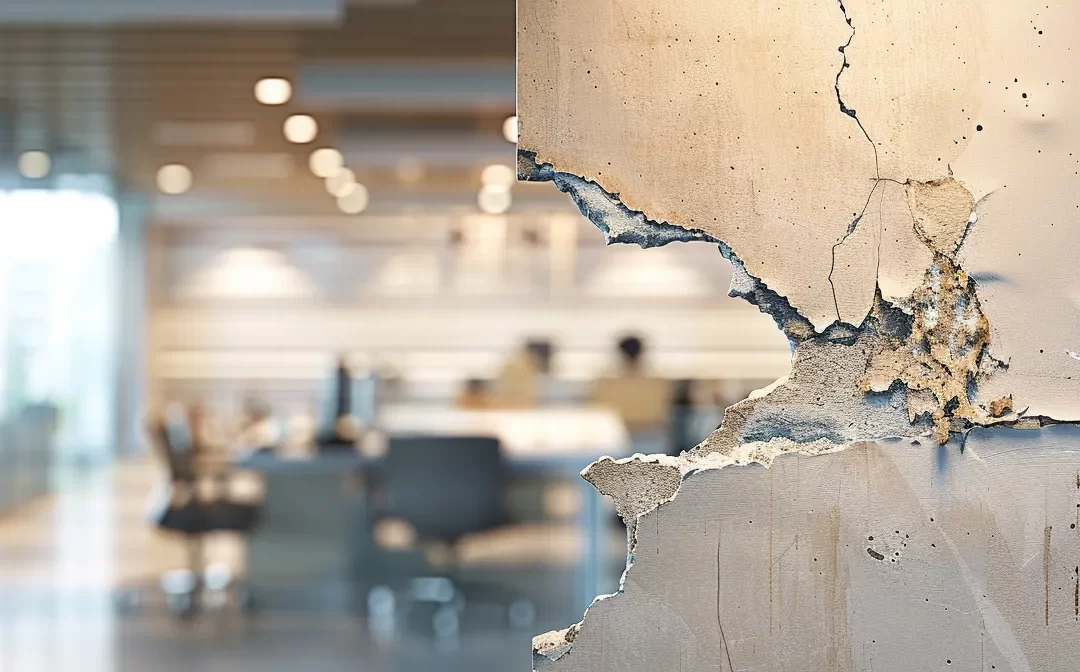
Recent Comments